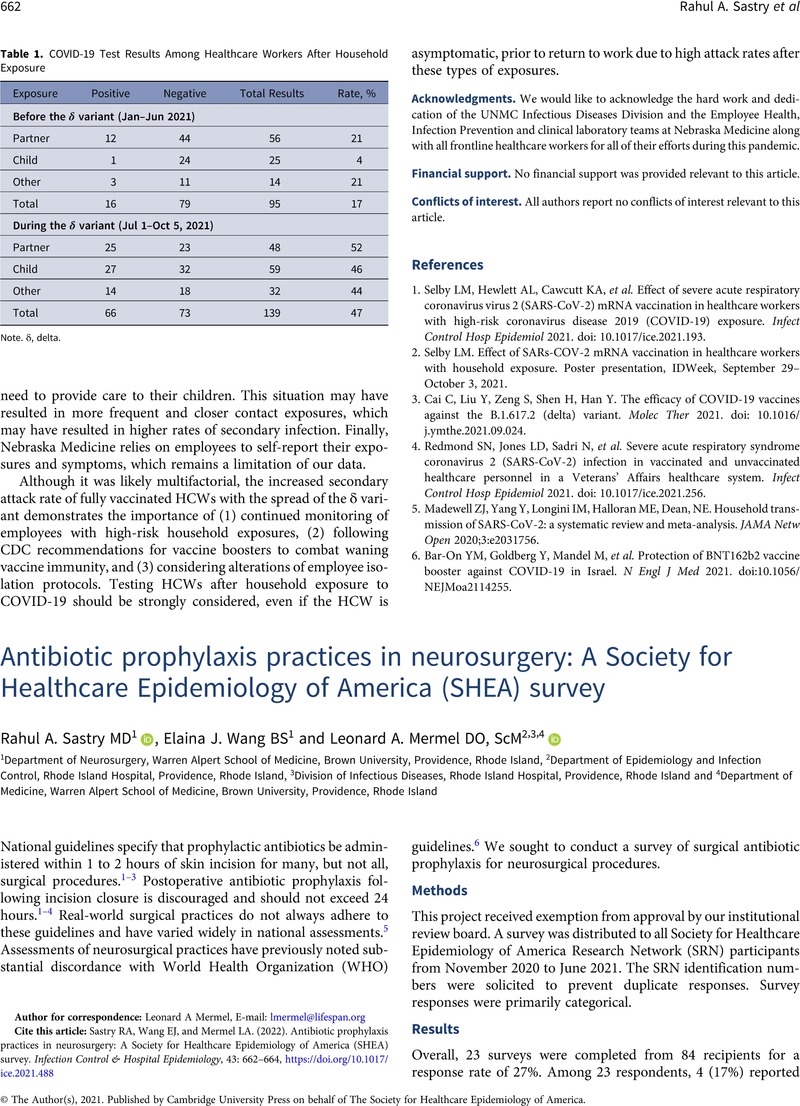Crossref Citations
This article has been cited by the following publications. This list is generated based on data provided by Crossref.
Esposito, Susanna
Zucchelli, Mino
Bianchini, Sonia
Nicoletti, Laura
Monaco, Sara
Rigotti, Erika
Venditto, Laura
Auriti, Cinzia
Caminiti, Caterina
Castagnola, Elio
Conti, Giorgio
De Luca, Maia
Donà, Daniele
Galli, Luisa
Garazzino, Silvia
La Grutta, Stefania
Lancella, Laura
Lima, Mario
Maglietta, Giuseppe
Pelizzo, Gloria
Petrosillo, Nicola
Piacentini, Giorgio
Pizzi, Simone
Simonini, Alessandro
Tesoro, Simonetta
Venturini, Elisabetta
Mosca, Fabio
Staiano, Annamaria
and
Principi, Nicola
2022.
Surgical Antimicrobial Prophylaxis in Neonates and Children Undergoing Neurosurgery: A RAND/UCLA Appropriateness Method Consensus Study.
Antibiotics,
Vol. 11,
Issue. 7,
p.
856.
Kwon, Taek Hyun
Shin, Hong Kyung
Yoon, Won Ki
Kim, Jong Hyun
and
Byun, Joonho
2023.
Antibiotics Prophylaxis for Endoscopic Endonasal Approach for Skull Base Tumor Surgery: A Meta-Analysis.
World Neurosurgery,
Vol. 174,
Issue. ,
p.
e82.
Zheng, Guanghui
Shi, Yijun
Sun, Jialu
Wang, Siqi
Li, Xiang
Lv, Hong
and
Zhang, Guojun
2023.
Effect of antibiotic prophylaxis in the prognosis of Post-neurosurgical meningitis patients.
European Journal of Medical Research,
Vol. 28,
Issue. 1,




